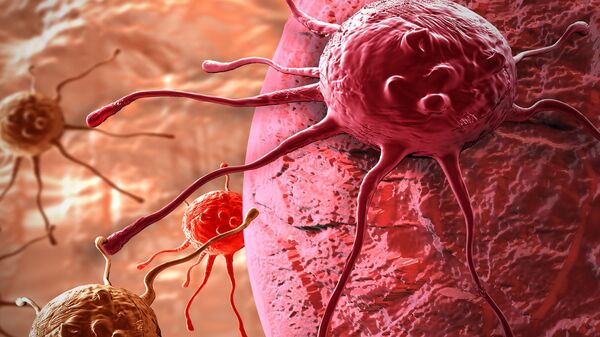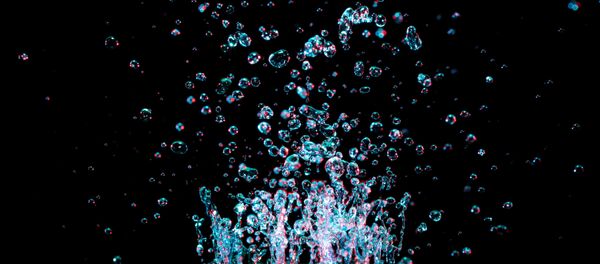In order to achieve this goal, Russian authorities are planning to implement screening programs that will allow diagnosing the diseases in their early stages, provide patients with high-quality and affordable drugs, and strengthen the human resource capacity of oncological services. All these changes are taking place against the backdrop of new diagnostic and treatment technologies and advanced scientific clinical research in the field.
Cancer: the second leading cause of death in Russia
A total of 3.5 million people suffer from cancer in Russia. Each year over 500,000 people are diagnosed with cancer for the first time. Compared with most developed countries, Russia has a higher cancer mortality rate: it is estimated to be 124.4 (per 100,000); while in other countries, which have learned how to fight the many forms of cancer, it is estimated at 108.1.
"Cancer is the leading cause of death, second only to cardiovascular diseases," said Igor Khatkov, chief freelance oncologist of Moscow's Department of Healthcare. "At the same time, cancer mortality rates are increasing."
Russian Deputy Prime Minister Olga Golodets believes that from the standpoint of the country's population, cancer is one of the most serious diseases; therefore, the government must prioritize the allocation of money for patient care and combating this disease.
University-based science joins in the fight against cancer
Healthcare, which is based on medical science, suggests three ways of combating cancer: chemotherapy, radiation therapy and surgery. All these measures are constantly being improved. Moreover, researchers are constantly developing new experimental methods for diagnosing and treating cancer.
A significant part of Russia's scientific potential is represented by university-based science, which is mostly centered in universities participating in the 5-100 Project (a state program aimed at supporting the largest Russian universities, launched by the Russian Ministry of Education and Science in accordance with a decree issued by President Vladimir Putin on May 7, 2012, On Measures to Carry Out State Policy in the Sphere of Education and Science.)
For many universities, the adaptation and implementation of new technologies in the biomedicine and nanotechnology spheres is one of the key priorities in the framework of the 5-100 Project's realization.
MEPhI: fluorescent nanocrystals
Professor Igor Nabiyev heads the laboratory of Nano-Bioengineering of the National Research Nuclear University MEPhI. Back in 2015, researchers from this laboratory presented on an international level their findings for diagnosing various types of cancer at very early stages.
Their research essentially suggested using fluorescent semiconductor nanocrystals (quantum dots) in order to detect cancer cells. According to the researchers, using the laboratory's research will allow doctors "to diagnose cancer at a molecular level, even before the tumor itself is formed."
Moreover, there also is a Bionanophotonics laboratory at MEPhI. In collaboration with their colleagues from Germany and Lomonosov Moscow State University, the laboratory's researchers are working on a new area of nanotechnology — nanotheranostics. This term, which appeared in modern science only recently, denotes the combining of nanoscale diagnostic and therapeutic methods.
The laboratory's researchers believe that "using porous silicon nanoparticles is a very promising nanotheranostics method for detecting affected cells." A research team headed by professor Viktor Timoshenko managed to create silicon nanoparticles (covered with a polymeric composition) that can be used for both examining tumors and destroying them, by "lighting" such particles up with ultrasound.
NUST MISIS: Thai cobra venom
Researchers at Energy Efficiency Center and Biomedical Nanomaterials laboratory of the National University of Science and Technology MISIS (NUST MISIS) are also actively researching methods for diagnosing and treating various types of cancer.
In order to achieve such visualization, researchers decided to make use of the unique properties of toxins and their selective interaction with given "markers" of a disease. Cancer cells are known to produce significant quantities of proteins. Administered through the bloodstream, these neurotoxin-quantum dot couplings enter the affected organ and start interacting with nicotinic acetylcholine receptors. When exposed to UV light, quantum dots start glowing, thus determining the size of a tumor.
ITMO: new type of silicon nanoparticles
ITMO University (St.Petersburg National Research University of Information) is also conducting successful research on the use nanotechnologies in medicine. For example, in collaboration with colleagues from Finland, the university's researchers created a new type of silicon nanoparticle that can be used for both destroying tumors, by heating the particles to ultra-high temperatures, and also for measuring temperatures in the body. "In the future, such nanosystems will allow us to target cancer cells only, while controlling the temperature in real time in order to make sure that healthy cells are protected from the uncontrolled overheating," the researchers say.
TPU: isotope technetium-99
Other universities are exploring other ways to develop new methods for diagnosing cancer. Thus, in collaboration with their colleagues from the Tomsk Cancer Research Institute and Russian Academy of Sciences' Institute of Bioorganic Chemistry, researchers at Tomsk Polytechnic University (TPU) created a new radiopharmaceutical based on the isotope technetium-99. Using this new development will allow researchers to accurately diagnose various types of cancer.
"Every cancer cell has a sort of "lock" in the form of receptors, while the protein, which our new drug contains, is a "key" to these receptors," explained Mekhman Yusubov, Head of Tomsk Polytechnic University's Department of Organic Substances and Polymer Materials. "In order not to lose this key among millions of other keys, we need to somehow mark it. For this we use chelate complexes. We sorb an isotope of technetium on this marker so that it can be easily detected by gamma cameras. Such a structure of this radiopharmaceutical allows us to accurately determine the size of the tumor and its exact location. This is particularly important when diagnosing metastatic cancer, when cancer cells "break away" from the primary tumor and affect other organs."
SPbPU: ultrasound
Researchers at St.Petersburg Polytechnic University's Medical Ultrasonic Equipment laboratory developed a prototype of the first Russian ultrasound machine for diagnosing and destroying tumors at early stages. The university's new machine is unique, because it uses ultrasound for three different purposes: for diagnostics, treatment and measuring temperatures. As a rule, similar machines used for tumor ablation (destruction), have to operate under magnetic resonance imaging (MRI) guidance, which significantly increases the cost of the procedure.
The researchers are planning to use the machine for non-invasive ablation of tumors in mammary glands, thyroid glands, kidneys, liver and other organs as well.
SFU: endophytes
Researchers at Siberian Federal University's Biotechnology of New Materials laboratory are looking into the possibility of using microorganisms called endophytes for treating cancer and other diseases, while researchers at Sechenov University are studying the genetic and epigenetic markers of cancer.
Science without borders
Research conducted at Russian universities participating in the 5-100 Project is closely intertwined with the leading world scientists' research. Most of the developments mentioned above are examples of successful international scientific collaborations.
Since 2016, Moscow has been hosting the International Symposium on Physics, Engineering and Technologies for Biomedicine, which is attended by leading scientists from all over the world. During his speech made at this forum, Paras Nath Prasad, professor at the University of Buffalo, said: "I am glad to have this opportunity to work together with Russian scientists, because I believe that science has no borders. Cancer and brain disorders are universal problems that require the collaboration of all countries in order to solve them."





